Goldstone Glass (Synthetic)
Goldstone is a sparkly man-made glass, which can be manufactured in a few different colours.
It has a few origin stories, the most prevalent of which insists some Venetian monks were making glass when they accidentally spilt some Copper filings into it. Whether this is accurate or not, I have no idea.
Different materials in the glass cause different colours. Blue is caused by Cobalt or Manganese, dark green is Chromium, and the reddy-brown colour is caused by small inclusions of Copper.
Showing all 16 results
-
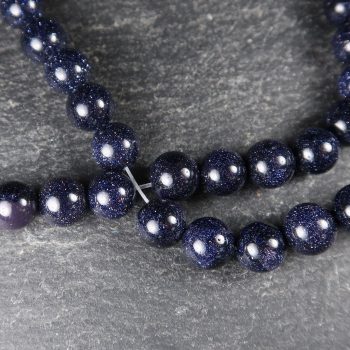
Goldstone bead strands (Blue)
£3.00 – £4.00 -
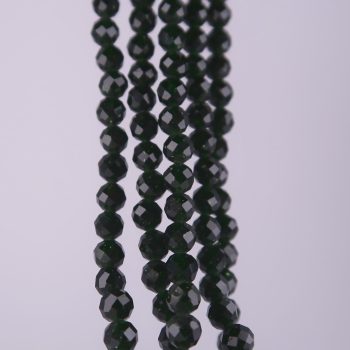
Goldstone bead strands (Green)
£3.00 – £5.00 -
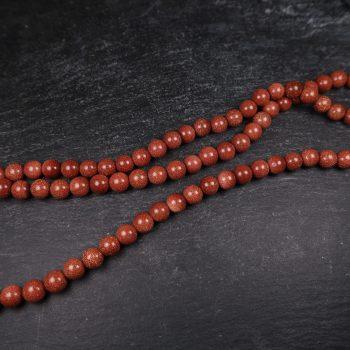
Goldstone bead strands (Red)
£2.50 – £4.50 -
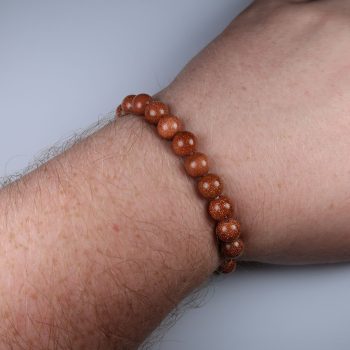
Goldstone Bracelets (Red)
£1.95 – £3.00 -
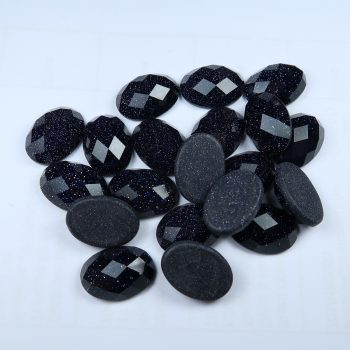
Goldstone Cabochons (Blue)
£1.25 – £5.00 -
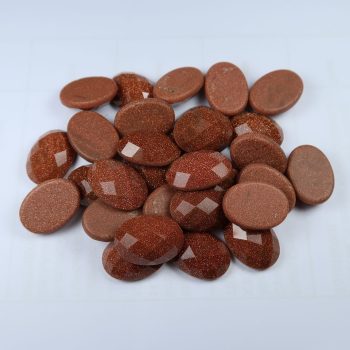
Goldstone Cabochons (Red)
£1.20 – £6.00 -
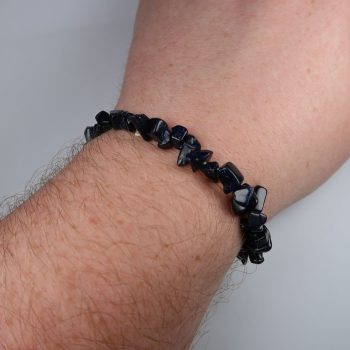
Goldstone Glass Bracelets (Blue)
£2.95 -
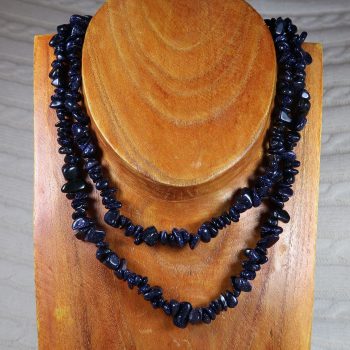
Goldstone glass necklaces (Blue)
£3.00 -
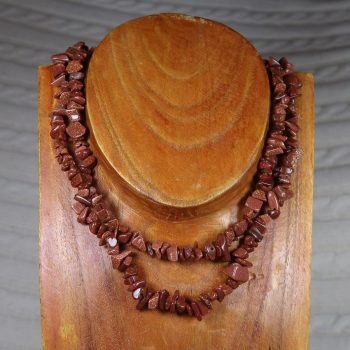
Goldstone glass necklaces (Red)
£3.00 -
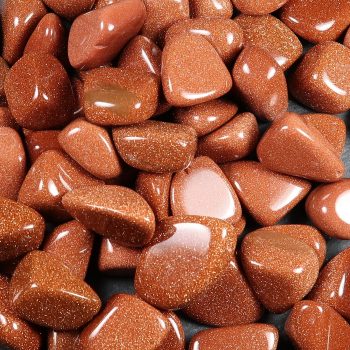
Goldstone glass tumblestones (Red/Brown)
£2.00 – £6.00 -
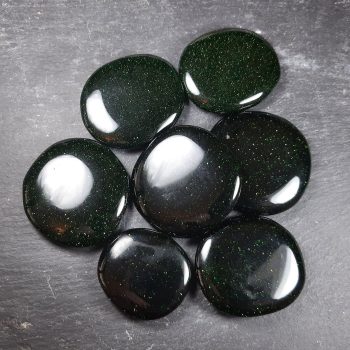
Goldstone Palm Stones (Green)
£5.00 – £6.00 -
Goldstone Palmstones (Red)
£2.00 – £3.00 -
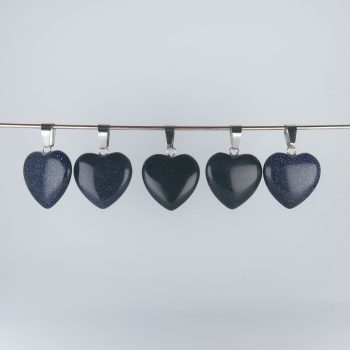
Goldstone Pendants (Blue)
£1.00 – £2.00 -
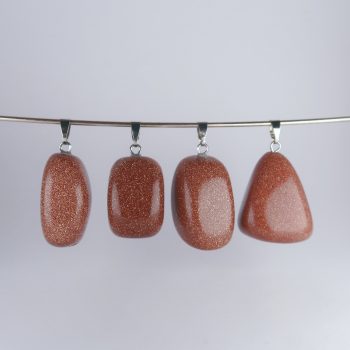
Goldstone Pendants (Red)
£0.65 – £3.00 -
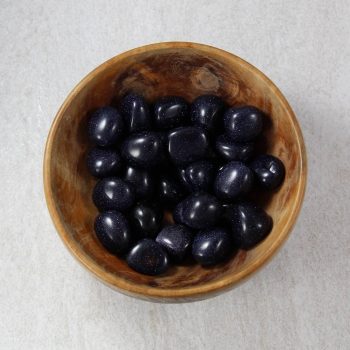
Goldstone Tumblestones (Blue)
£1.50 – £5.00 -
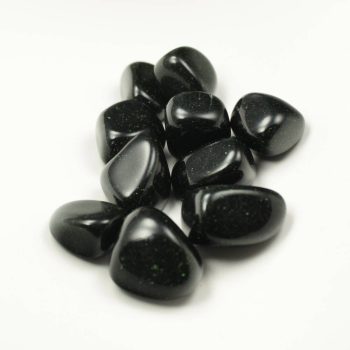
Goldstone Tumblestones (Green)
£2.50
Appearance, Uses and History
Goldstone is almost universally sold polished – it is, after all, a glass. There are no specimen pieces in their host rock, or interesting crystal formations to be found here, just sharp lumps of glass.
It is commonly used for carvings, tumblestones, and jewellery making – but it is sometimes misrepresented, either as natural or as something else entirely.
One of the more common names I see popping up for it is ‘golden sandstone’, which is extremely misleading considering Sandstone is a real type of rock.
Goldstone is an interesting man made glass which is created in blue, red, and green.
It is often sold polished, as tumblestones or carvings or jewellery. The rough pieces are not especially common but can be purchased for lapidary – although precautions should be taken as they are a form of glass.
The glass is created by mixing glass and metal in an oxygen reducing furnace atmosphere; crystallisation allows the metal to become shiny inclusions in the glass itself.
Red and Blue Goldstones are the most common, and contain Copper and Cobalt respectively. Green Goldstone takes its colour from Chromium oxides.
While one manufacturing process for Goldstone was invented in Venice in the seventeenth century, there is some archaeological evidence that it was made in the 12-13th Century in what is now Iran.
Goldstone was originally referred to as ‘Aventurine glass’, and was the source of both the word ‘aventurescence’ and the mineral name ‘Aventurine’. This is unusual; normally synthetics and glasses are named after minerals that are already popular!
Locales
Goldstone is a man-made glass and as such doesn’t really have a ‘locale’.
Historically, it was made in Murano and Venice, in Italy. In the modern day, I’m actually having trouble finding any information but we can assume production has likely moved East, probably to China.
Mineralogy
Goldstone consists of normal silica glass with metal inclusions – Copper oxide, Cobalt, Manganese, or Chromium Oxides.
If you’re interested, you can read this 19th century recipe for the glass.
Hazards and Warnings
Goldstone is a glass, which can be extremely sharp when broken. I have had to process very large specimens into smaller pieces and this was quite scary!
Almost all rocks, minerals (and, frankly, almost all other substances on earth) can produce toxic dust when cutting, which can cause serious respiratory conditions including silicosis. As a glass, Goldstone is certainly not an exception!
When cutting or polishing rocks, minerals, shells, etc, all work should be done wet to minimise the dust, and a suitable respirator or extraction system should be used.
Translations
Includes translations for ‘goldstone glass’ and ‘aventurine glass’ in an attempt to cover as many languages as possible. However, due to the simplicity of this term – ‘gold’ ‘stone’ ‘glass’, it is likely automated translators cannot effectively translate it. It is especially difficult considering ‘aventurine glass’ contains the name of another mineral, ‘aventurine’.
Arabic:
- زجاج جولدستون
- زجاج افينتورين
Hindi:
Portuguese:
- vidro de goldstone
Bengali:
Indonesian:
Punjabi:
English:
- Goldstone
- Goldstone glass
- Aventurine glass
- Golden Sandstone (extremely misleading; should not be used as Sandstone is not a glass at all).
Italian:
- vetro avventurina
Russian:
- стекло голдстоуна
French:
Japanese:
- ゴールドストーンガラス
- アベンチュリンガラス
Spanish:
- vidrio goldstone
- vidrio de aventurina
German:
- Goldsteinglas
Korean:
Thai:
Gujurati:
Mandarin and Traditional Chinese:
- 金石玻璃
Urdu:
Further Reading / External Links
- https://www.mindat.org/article.php/112/%22Goldstone%22+-+Aventurine+Glass (probably the best article on the subject)
- https://en.wikipedia.org/wiki/Goldstone_(glass)
- https://geology.com/gemstones/goldstone/
- http://gemologyproject.com/wiki/index.php?title=Goldstone
- https://www.researchgate.net/publication/286618862_Goldstone_of_Aventurine_Glass_History_Recipes_Analyses_and_Manufacture
